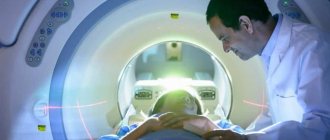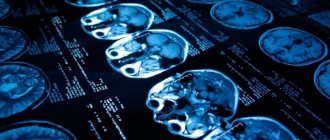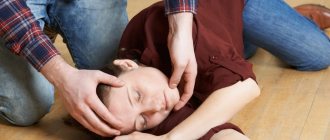The Moscow mental health center “Leto” provides a full range of techniques for identifying and treating psychoneurological diseases. To do this, we use modern equipment and drugs with minimal side effects. Our doctors have a high level of theoretical training and rich practical experience. If you or your relatives have night sleep epilepsy, then by contacting our clinic, you will receive qualified help and get rid of the manifestations of the disease. Not only residents of Moscow, but also representatives of other regions and citizens of other countries come to us for treatment. We try to help all people in need of healing and find an individual approach to each client. Those who have undergone treatment leave positive reviews and, if necessary, contact us again.
What is the difference between epilepsy at night?
Attacks in adults are less severe compared to daytime episodes. Convulsions are completely absent, or are expressed smoothed out in the form of chaotic oscillatory movements of the arms and legs. This circumstance is explained by the low activity of the central nervous system at night. During this period of the day, the human brain reacts minimally to incoming external and internal stimuli.
The clinical classification of paroxysmal manifestations takes into account the sleep phase.
So the following variants of epileptic seizures are distinguished:
- Early. Occurs within the first 2 hours after
the man falls asleep. - Pre-dawn. Before waking up, basic functions in the brain begin to activate and against this background, manifestations of the disease may develop.
- Morning. Characteristic of cases of forced awakening (alarm clock, phone call, physical impact, voice).
Daytime sleep attacks can also be included in this group.
Knowing these features, the medical staff of the Leto clinic monitors clients with this pathology most carefully in order to prevent possible complications.
What is an epileptic seizure?
An epileptic seizure is a short-term episode of abnormal excessive discharge of nerve cells in the cerebral cortex, causing a condition that is noticeable to the person having the seizure or to others around them.
Sometimes the patient may forget the attacks and not notice them. Likewise, seizures of epilepsy in patients may not always be noticeable to others. The clinical manifestations of attacks are very diverse in different patients and reflect the functions of those areas of the cortex in which the pathological discharge occurs and through which it spreads. Motor, sensory or mental disturbances, autonomic disorders and neurological symptoms of prolapse (such as cessation of speech or loss of muscle tone) may occur alone or in combination. Epileptic seizures often have a sudden onset and usually resolve spontaneously. They are usually short, lasting from a few seconds to a few minutes, and are often accompanied by a period of drowsiness or confusion (postictal period).
Despite the variety of seizures, a given patient usually experiences only one or a few types of seizures; Moreover, the attacks are usually similar to each other (their manifestations are stereotypical in each individual case) and are quite short-lived (lasting a few seconds or minutes). The variety of clinical manifestations of epileptic paroxysms was the basis for the development of their unified classification.
Epileptic seizures are always a sign of a pathological process, but not all seizures are manifestations of a chronic disease (epilepsy).
Nocturnal attacks of epilepsy, manifestations
Paroxysm may have a convulsive component
Tom, and without him. The grand mal attack looks classic. It begins with a phase of the tonic component, in which the patient’s body and lower limbs are stretched, arms are pressed to the chest, muscles spasm, and breathing is impaired.
After about a minute, the clonic phase develops. The patient moves his limbs tensely and chaotically. The muscles of the neck and torso are in a contracted state. Breathing is hoarse, foam and blood may come out of the mouth, and sphincter disorders are observed. After a few minutes, the painful process subsides. An epileptic, as a rule, does not know and does not remember his attacks, especially those that occur in a dream.
Knowing about his illness, he independently identifies the signs of a seizure as a result of detecting:
- Rumpled and crumpled bed.
- Stains of blood and saliva.
- Traces of feces.
Sometimes before the onset of an epileptic attack, patients wake up with a feeling of fear, experience a sharp headache, nausea, and vomiting. Seizures can occur several times during the night.
Features of the nocturnal type of illness
This type of epilepsy is characterized by the occurrence of seizures during night sleep. In some cases, seizures also appear during the daytime rest.
This disease is characterized by:
- vomiting and nausea;
- sudden awakenings for no apparent reason;
- shiver;
- convulsions;
- dysarthria;
- severe headaches;
- distortion of the eyes, in some cases of the face;
In a dream, an epileptic can get up on all fours and make movements with his legs that resemble riding a bicycle.
Causes of epilepsy at night
Why the symptoms of the disease appear during the dark period of the day still remains an open question. But based on practical observations, psychiatrists at our mental health center have identified a number of factors that provoke exacerbation.
These include:
- Insufficient duration of rest, chronic lack of sleep.
- A state of prolonged stress.
- Abuse of drinks containing alcohol, smoking.
- Taking psychoactive substances, including medications.
- Head injuries, previous surgical interventions.
- The presence of epilepsy in close relatives.
In a child, an attack can be triggered by:
- Overexcitement before falling asleep.
- Loud noise at night.
- Lack of fresh air.
- High or low temperature in the sleeping area.
- Violent awakening.
Similar causes leading to a seizure are also identified in adolescents. To these is added watching a movie in the evening that causes a mental reaction and excitement.
Snoring and sleep apnea: visible and invisible consequences
One of the main signs of obstructive sleep apnea is severe snoring, which can be interrupted from time to time by periods of complete silence, just during periods of pauses in breathing, and then resumes with a vengeance. Also, in severe forms of the disease, a person can sometimes wake up from a feeling of lack of air. The result of inadequate sleep is daytime sleepiness. But these are all visible and obvious consequences of sleep apnea.
And there are also problems that, at first glance, have nothing to do with stopping breathing during sleep. For example, not even all doctors know that in some patients with bronchial asthma, episodes of obstructive apnea can sometimes provoke nocturnal asthmatic attacks. Moreover, in this case, neither the patient nor his attending physician often can understand that the attacks were caused by apnea, and therefore the seemingly correct drug treatment aimed at controlling asthma symptoms is not effective enough. After all, the cessation of breathing was short-lived and happened in a dream, but coughing and difficulty breathing - that’s what they are, and they continue for quite a long time.
Stopping breathing during sleep can provoke an attack of suffocation in patients with bronchial asthma
Another common problem in patients with sleep apnea is the so-called gastroesophageal reflux or, in other words, the reflux of stomach acid into the esophagus. In this case, esophageal reflux is the result of ongoing respiratory efforts while the upper airway is blocked during apnea. At this moment, the pressure inside the abdomen increases, the stomach is compressed and its contents end up in the esophagus. If reflux is so severe that it reaches the pharynx, then in addition to heartburn, this condition can cause a coughing attack or even spasm of the vocal cords. As a result, the patient wakes up not just from a sudden lack of air, but also with the inability to breathe. Inhalation and exhalation are severely difficult, sometimes almost impossible, breathing is loud and wheezing. Especially if this happens for the first time, the person can be very scared.
Usually such an attack lasts a few minutes and then goes away on its own, but to a patient awakened in the middle of the night from suffocation, these minutes can seem like long hours.
Diagnostics
If your loved ones, children, or acquaintances have suspicious symptoms, we suggest undergoing a diagnostic examination at our Leto clinic. Experienced specialists will assess the patient’s condition and accurately establish a diagnosis so that the subsequent selection of treatment will lead to a positive result.
To make an appointment with a doctor, make a preliminary call at the phone number listed on the website. The receptionist on duty will register the client at a suitable time.
The initial consultation includes:
- Survey and find out the essence of the problem that has arisen.
- Examination with assessment of all data on the condition, including neurological status, identifying signs characteristic of epilepsy.
- Clarification of all the details of existing epileptic attacks: frequency of occurrence, duration, other features.
After the medical examination you will need to undergo:
Magnetic resonance imaging (MRI). It will allow us to identify oncological processes, structural features of the brain, the presence of consequences of hemorrhages, vascular anomalies, and other changes that lead to problems.- Electroencephalography (EEG). Removal of biopotentials makes it possible to accurately identify the paroxysmal predisposition of the nervous system and establish the variant of the disease.
- Positron emission tomography (PET). The technique is prescribed to patients with metabolic and metabolic disorders in the body to assess metabolic processes in brain tissue, to confirm the found formations in controversial cases.
If the patient has concomitant ailments, the clinic can provide consultations with other specialists.
All procedures are necessary to clarify and confirm the diagnosis.
Good quality sleep is an extremely important component of the overall health of a patient with epilepsy, but unfortunately, it is often overlooked. Meanwhile, patients with epilepsy often complain of daytime drowsiness and poor sleep [1].
To confirm this, we cite one of the latest epidemiological studies [2], which established a high prevalence of sleep disorders in epilepsy. This was a controlled cross-sectional study involving 150 outpatient neurology centers. The study included patients aged 18 to 55 years. Since the onset of the disease, they received 2 antiepileptic drugs (AEDs). The sample included 237 patients with non-resistant focal epilepsy (group 1) and 264 patients with a resistant form of focal epilepsy (group 2). In patients of the 1st group in 22% of cases, of the 2nd group in 45%, sleep disorders were identified ( p
<0,0001).
Patients with intractable epilepsy had a lower quality of life (according to QOLIE-10) compared to patients in group 1 ( p
<0.001). In addition, a positive significant correlation was noted between quality of life and quality of sleep.
In the work of E. Louis [3], it was found that sleep plays a dual role in relation to epilepsy. On the one hand, some phases of sleep are antiepileptic - in most cases these are δ-sleep and the REM sleep phase; on the other hand, the 2nd stage of the slow-wave sleep phase can provoke epileptic activity. These data, in the author’s opinion, should be interpreted taking into account the fact that in a healthy person the last stage is a kind of set of paroxysmal elements: vertex acute potentials, positive occipital acute sleep waves (λ-sleep waves), K-complexes, etc.
We previously [4], in a polysomnographic study in patients with sleep epilepsy, identified an increase in the total duration of sleep and the representation of stage 2 sleep in its structure, an increase in the number of “sleep spindles” and their greater synchronization (amplitude, duration) compared to patients with epilepsy wakefulness. It was found that the sleep structure of patients with waking epilepsy is characterized by an increase in the representation of δ-sleep and a decrease in the frequency of spontaneous activation shifts in its structure. A qualitative analysis of δ-sleep revealed greater synchronization of the δ-rhythm (δ-index, amplitude) in this group of patients. Characteristic features of the functioning of nonspecific brain systems in sleep-wake epilepsy have been discovered. In waking epilepsy, there is also a lack of activating influences, which manifests itself in all functional states: both in wakefulness and in sleep. Patients with sleep epilepsy experience increased thalamocortical synchronization during sleep. In addition to neurophysiological ones, some clinical features of epileptic seizures have been identified in terms of sleep-wake states. It was noted that waking epilepsy is more often characterized by a left-hemispheric location of the epileptic focus, idiopathic generalized forms of epilepsy and motor phenomena during an attack; Sleep epilepsy manifests itself more often as partial generalized seizures, sensory phenomena are noted during the attack, and the focus is located predominantly in the right hemisphere. For seizures that occur during sleep, the prognosis of the disease is more favorable in the case of generalized tonic-clonic seizures compared to partial ones.
As for waking epilepsy, in these cases it occurs equally often in boys and girls, while sleep-wake epilepsy (asynchronous seizures) occurs 1.5 times more often in men.
In modern literature, there are 4 main types of epileptic seizures, most often occurring during sleep: 1) generalized tonic-clonic; 2) complex-partial with origin from the frontal lobe; 3) complex-partial with origin from the temporal lobe; 4) tonic.
It has been established [5-7] that paroxysmal phenomena not only of an epileptic nature, but also non-epileptic paroxysms that occur during sleep can disturb sleep. The latter include parasomnias, nocturnal myoclonus, movement disorders - periodic leg movements in sleep and bruxism, sleep talking, nocturnal enuresis. The influence of PEP cannot be ruled out either.
AEDs and seizures can affect sleep architecture, leading to sleep disturbances and daytime sleepiness. M. Sammaritano and A. Sherwin [8] indicate that some AEDs may have a detrimental effect on sleep. These include benzodiazepines, barbiturates, phenytoin; while others, such as gabapentin, on the contrary, can improve sleep. All AEDs of the “old” generation and some “new” AEDs can have a significant modulating effect on sleep physiology. Most “old” AEDs reduce REM and slow-wave sleep, increasing the proportion of phases 1 and 2 of NREM sleep. G. Gigli et al. [9] found that carbamazepine, immediately after administration, temporarily reduces REM sleep, but subsequently has little effect on sleep architecture. According to N. Foldvary et al. [10], lamotrigine reduces slow-wave sleep, while simultaneously increasing stage 2 sleep and REM periods without significant subjective signs of insomnia.
If a patient suffering from epilepsy requires polytherapy with AEDs, then, as a rule, in this case there is a drug-resistant form of the disease. This is confirmed by data from a number of studies [11, 12], which found that the severity of insomnia has a close relationship with polypharmacy. It is emphasized that insomnia can occur as a consequence of the disease itself, or be secondary - as a consequence of the effects of drugs.
Sleep disorders in patients with epilepsy can develop in connection with poor sleep hygiene, but can also arise as a primary disorder. But in connection with the first assumption, it should be noted that patients with epilepsy, due to their inherent personality characteristics, follow the rules of sleep hygiene more carefully. As evidence, we can cite data from one of the studies [13]. It included 270 patients with epilepsy and 230 healthy controls, matched by age, gender and level of education. They all completed a sleep quality questionnaire, which included 112 multiple-choice questions, including sleep hygiene. The percentage of subjects who habitually violate sleep hygiene was significantly higher in the control group compared to the group of patients with epilepsy ( p
<0.05). In addition, the authors did not find a significant relationship between the type of epilepsy and/or severity of the disease and the patient's compliance with sleep hygiene rules.
N. Foldvary-Schaefer [11] believes that if patients have constant daytime sleepiness, especially with AED monotherapy, low serum AED concentrations and good treatment effectiveness against attacks, then primary sleep disorders should be suspected.
Objective confirmation of the presence of sleep disorders in patients with epilepsy is known to be obtained using polysomnography. It allows us to identify the following disorders: prolongation of time to fall asleep, increase in the number of night awakenings and disturbances in sleep architecture [14, 15].
In connection with sleep disturbances in epilepsy, one should consider the literature data on their connection with depression, since depression is the most common comorbid disease in its temporal lobe form [16, 17].
The prevalence and causes of insomnia in a population of outpatients with epilepsy were studied by M. Vendrame et al. [18], who collected relevant data between July 2010 and October 2011. The analysis included 152 epilepsy patients with a mean age of 46 years (20–88 years). Concomitant mood disorders were found in 74 (48%) patients.
According to the Insomnia Severity Index (ISI), it was found that 78 (51%) patients suffered from moderate to severe insomnia. According to the Pittsburgh Sleep Quality Index (PSQI), the entire sample included 72% of “poor sleepers” (PSQI>5). Both in the group of patients with insomnia - group 1 (according to the results of the ISI analysis), and in the group of "poorly sleeping patients" - group 2 (according to the results of the PSQI analysis) there were more women (58% in both groups, p
=0.03 and
p
=0.02, respectively).
In the described groups, patients receiving polytherapy with AEDs predominated ( p
= 0.03 and
p
= 0.04, respectively). The most commonly used AED in both monotherapy and polytherapy was levetiracetam. In this study, the prevalence of sleep complaints did not differ among patients taking different AEDs. Poor sleep quality and severe insomnia were associated with a greater number of AEDs taken and Beck Depression Inventory severity.
It is generally accepted [19-21] that sleep deprivation is associated with increased excitability of the cortex and, accordingly, an increased risk of an attack. Therefore, the neurophysiological aspects of sleep disorders in epilepsy are of particular interest. Among non-invasive neurophysiological methods that allow assessing the excitability of the motor cortex, as well as changes in the processes of intracortical inhibition and excitation, transcranial magnetic stimulation (TMS) occupies an important place [22]. In epileptology, when performing TMS, the most informative indicator is the threshold of the evoked motor response (EMR) - the magnitude of the stimulus intensity, expressed as a percentage of the maximum intensity, at which the minimum (but with an amplitude of at least 30 μV) EMR is recorded. It was found that the MEP threshold reflects the state of excitability of the human motor cortex [23].
We [24, 25] found a correlation between a reduced VMO threshold (below 40%) and the following clinical signs: a history of febrile seizures, physiological sleep myoclonus, and clinically detectable increased neuromuscular excitability. These signs are traditionally considered as factors indicating increased neuronal excitability in patients with partial epilepsy, as well as in patients with generalized epilepsy, in whom this brain condition is genetically determined. The fact of the presence of an epileptic focus in partial epilepsy affects the cerebral cortex located outside the focus, regardless of the activity of the epileptic process (presence or absence of an attack); this, in turn, leads to a decrease in inhibitory and facilitation of excitatory influences on the ipsilateral motor cortex, even if the epileptic focus is not located there. Thus, data were obtained indicating changes in the functional state of the cortex and, accordingly, the MEP threshold in patients with epilepsy.
When a person stays awake for a long time (and sleep time decreases), he becomes drowsy, which can be manifested by a decrease in vigilance and a feeling of fatigue. Objectively, prolonged wakefulness leads to impairments in performance at all levels, which can be observed from an increase in reaction time for solving simple problems, up to impairments in high-order cognitive functions, including the ability to learn. It should, however, be taken into account that the degree of excitability of the cortex can vary significantly depending on the time of wakefulness, which is especially important for patients with epilepsy. in vitro animal experiments
and
in vivo,
evidence has been found for potentiation of the prevalence of synaptic processes during wakefulness, which leads to a gradual accumulation of cortical excitability.
Prolonged wakefulness causes an increase in the frequency and amplitude of miniature excitatory postsynaptic currents in cortical layers and the number and size of central synapses in Drosophila melanogaster
. In rats in a state of wakefulness, an increase in the proportion of working neurons in the neural network and increased synchronization of the work of cortical neurons was shown [19].
Modern studies [19, 26] show that in healthy people and patients with epilepsy, sleep plays an important role in regulating the processes of excitation and inhibition in the cerebral cortex, and shortened sleep, disrupting these processes, can cause not only seizures, but also hallucinations, and depression.
When considering the issues of correcting sleep disorders in a patient with epilepsy, one should first of all point out the need to conduct a thorough analysis of the medical history in terms of identifying all possible causes of sleep disorders, and when prescribing antiepileptic therapy, evaluate the possible side effects of AEDs, especially when it comes to polytherapy. When assessing a patient's mental state, it is also important to pay close attention to the possibility of depression. For depression, it is necessary to prescribe antidepressants, which can have a positive effect not only on affective disorders, but also normalize sleep.
The drug therapy regimen for insomnia itself may include sleeping pills (doxylamine, zopiclone, zolpidem, zaleplon), which allow one to achieve fairly rapid sleep compensation. Drugs that can be recommended in this situation include donormil, a histamine H1 receptor blocker from the ethanolamine group. It has a hypnotic, sedative and M-anticholinergic effect, while the severity of the sedative effect it provides is comparable to barbiturates. The drug reduces the time it takes to fall asleep, increases the duration and quality of sleep without changing its architecture. The duration of action of Donormil is 6-8 hours. It is prescribed to adults orally at a dose of 15 mg 15-30 minutes before bedtime for no more than 3-5 days. However, it should be borne in mind that there are a number of contraindications: angle-closure glaucoma, prostatic hyperplasia, age under 15 years [27].
The undoubted advantages of Donormil include the following [28]: restoration of the physiological structure of sleep; absence of withdrawal syndrome; It is also important that Donormil does not belong to the category of strictly controlled drugs.
I would also like to draw attention to non-drug methods of treating insomnia. We are talking about maintaining sleep hygiene, psycho-, physio- and phototherapy.
Concluding the review of literature data, we can state that sleep and epilepsy are connected by several mechanisms: 1) slow-wave sleep can activate spike activity in the brain and seizures; 2) attacks and the use of AEDs can cause sleep fragmentation; 3) comorbid sleep disorders can lead to a decrease in quality of life and increase medical risks in patients suffering from epilepsy; 4) parasomnias can imitate epileptic seizures, which is important to consider during diagnosis and in cases of ineffective therapy. For a more accurate diagnosis of sleep disorders, especially at night, it is necessary to use video-EEG polysomnography.
Recognizing and effectively treating sleep disorders in patients with epilepsy can reduce the frequency of seizures and improve their overall condition and functioning.
Treatment
After consultation and examination, psychiatrists at the Leto clinic will offer you the most suitable treatment option. In uncomplicated cases, you can get by with an outpatient selection of the necessary medications to take at home. In more complex situations, hospitalization cannot be avoided.
We offer you comfortable conditions in our hospital rooms. 24-hour supervision allows you to use all treatment procedures with maximum efficiency.
The treatment plan is selected individually and includes:
Prescribing drugs to relieve pain from attacks in the presence of pain using anticonvulsants or painkillers, as well as taking prunes, which contain a lot of calcium. This element is able to reduce the number of convulsive episodes and has the ability to relieve pain.- Prevention and reduction of the frequency of new paroxysms. The goal is achieved by consuming foods that are part of the ketogenic diet.
- Reducing the duration of residual seizures.
- Gradually reduce the dose of medication after the seizures disappear.
Pharmaceutical drugs are selected in such a way as to minimize the possible side effects of anticonvulsants.
Nocturnal sleep epilepsy must be eliminated by prescribing special anticonvulsants. The selection of anticonvulsants begins with the selection of one name. If necessary, two or more pharmaceuticals are introduced into the treatment regimen.
Most often used:
- Carbamazepine.
- Clonazepam.
- Phenytoin.
- Lamotrigine.
If the selection and combination of pharmacotherapy does not give the expected result, then electrical stimulation of the vagus nerve is prescribed.
As an additional treatment option, the Vojta physiotherapeutic method is used, based on the normalization of nerve connections. This technique can be taught to the patient’s relatives, and they will be able to use it at home independently after discharge from the hospital.
Therapy in childhood
Neurologists prescribe the following medications for children:
- Anticonvulsants - stop the appearance of convulsions directly at the site of electrical activity in the brain. These may be ethosuximide, Levetiracetam, Phenytoin.
- Neurotropic - inhibit the transmission of nerve impulses.
- Psychotropic - capable of changing the psychological status of the patient, making his nervous system function differently.
- Nootropics - improve processes in the brain.
When conducting outpatient treatment, patients must adhere to the following rules:
- Maintain a time interval between taking medications, do not change their dosage yourself, and do not try to replace them with analogues.
- Do not use other medications without a doctor’s prescription, as this can reduce or completely eliminate the effect of the prescribed neurotropic medications.
- Inform the doctor about any side symptoms that arise and any manifestations that cause concern. In this case, it may be necessary to change the main drug.
Cost of services
| CONSULTATIONS OF SPECIALISTS | |
| Initial consultation with a psychiatrist (60 min.) | 6,000 rub. |
| Repeated consultation | 5,000 rub. |
| Consultation with a psychiatrist-narcologist (60 min.) | 5,000 rub. |
| Consultation with a psychologist | 3,500 rub. |
| Consultation with Gromova E.V. (50 minutes) | 12,000 rub. |
| PSYCHOTHERAPY | |
| Psychotherapy (session) | 7,000 rub. |
| Psychotherapy (5 sessions) | 30,000 rub. |
| Psychotherapy (10 sessions) | 60,000 rub. |
| Group psychotherapy (3-7 people) | 3,500 rub. |
| Psychotherapy session with E.V. Gromova (50 minutes) | 12,000 rub. |
| TREATMENT IN A HOSPITAL | |
| Ward for 4 persons | 10,000 rub./day |
| Ward for 3 persons | 13,000 rub./day |
| Ward 1 bed VIP | 23,000 rub./day |
| Individual post | 5,000 rub. |
| PETE | 15,000 rub./day |
This list does not contain all prices for services provided by our clinic. The full price list can be found on the “Prices” , or by calling: 8(969)060-93-93. Initial consultation is FREE!
Preventing seizures
Epileptic seizures that occur at night are easier for patients to tolerate. The effectiveness of drug therapy also gives more significant results. After treatment is completed at our mental health center, we offer patients recommendations to reduce the likelihood of symptoms returning.
Clients should adhere to the following rules:
Normalize sleep and rest patterns. Sleep at least 8 hours a day, go to bed and get up at a certain time.- Provide the opportunity to rest for at least 1 hour during the day.
- In the evening, do not watch TV for a long time, especially with programs and films that carry negative information.
- Do not play computer games or talk on the phone for a long time.
- Before going to bed, calm down and think about something pleasant.
- Sleep in a ventilated room with the curtains closed.
- Avoid drinking alcohol and smoking completely.
- Do moderate intensity physical activity. Strictly avoid overloading.
- If you have the slightest suspicion of resumption of epileptic seizures, consult a doctor immediately.
Duration and frequency of seizures
Most people believe that an epileptic attack looks like this: the patient’s cry, loss of consciousness and a person’s fall, muscle spasms, shaking, subsequent calming down and restful sleep. However, convulsions do not always affect the entire human body, just as the patient does not always lose consciousness during seizures.
A severe seizure may be evidence of generalized convulsive status epilepticus with tonic-clonic seizures lasting more than 10 minutes and a sequence of 2 or more seizures, between which the patient does not regain consciousness.
To increase the percentage of diagnosis of status epilepticus, time lasting more than 30 minutes, which was previously considered the norm for it, it was decided to reduce it to 10 minutes in order to avoid wasted time. With untreated generalized statuses lasting an hour or more, there is a high risk of irreversible damage to the patient’s brain and even death. At the same time, the heart rate and body temperature increase. Generalized status epilepticus can develop for several reasons at once, including traumatic brain injury, rapid withdrawal of anticonvulsant medications, and so on.
However, the vast majority of epileptic seizures resolve within 1-2 minutes. After the completion of a generalized attack, the patient may develop a postictal state with deep sleep, confusion, headache and muscle pain, lasting from a couple of minutes to several hours. Sometimes Todd's palsy occurs, which is a neurological deficit of a transient nature, expressed by weakness in the limb, which is opposite in location to the focus of electrical pathological activity.
Best materials of the month
- Coronaviruses: SARS-CoV-2 (COVID-19)
- Antibiotics for the prevention and treatment of COVID-19: how effective are they?
- The most common "office" diseases
- Does vodka kill coronavirus?
- How to stay alive on our roads?
In most patients, it is impossible to find any neurological disorders in the periods between attacks, even if the use of anticonvulsants actively inhibits the function of the central nervous system. Any decrease in mental functions is associated primarily with neurological pathology, which initially led to the occurrence of seizures, and not with the seizures themselves. Very rarely, there are cases of non-stop seizures, as is the case with status epilepticus.









